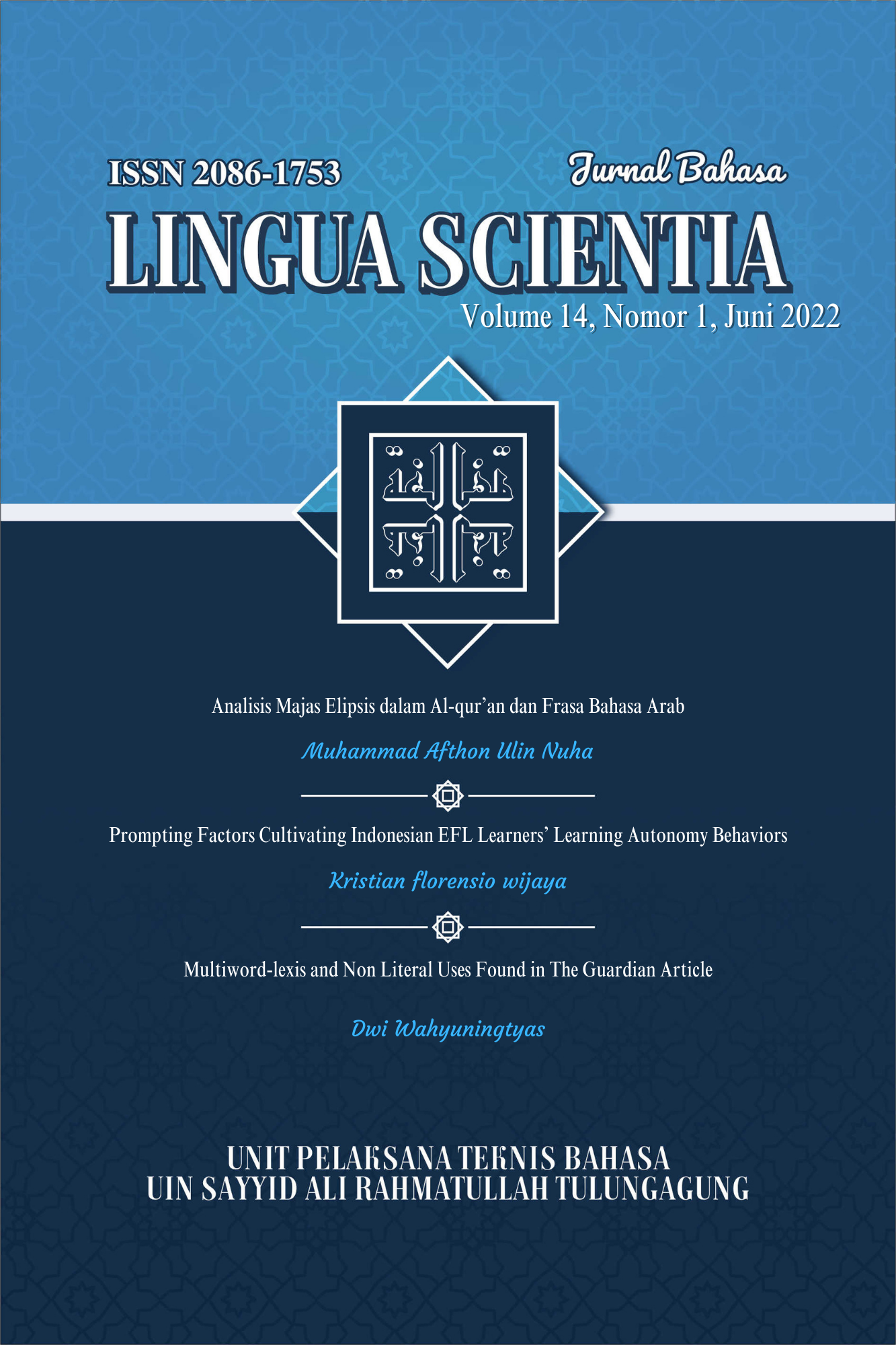A NARRATIVE INQUIRY STUDY ON LANGUAGE LEARNING THROUGH POP UP BOOK
Abstract
This research is a narrative inquiry research that focuses on students' perceptions and experiences in language learning using a pop-up book. The use of media in learning is considered very important so that researcher focused on language learning by using realia media in the form of pop-up books. Narrative inquiry research is a form of qualitative research in which researcher obtains data from documentation and student interviews. This research was conducted at MTs Muhammadiyah 13 Solokuro, at the 7th grade level with a total of 9 students. The study took place from March to May 2022. The results of this study indicate that students have a good perception of language learning using pop-up and of course they have new experiences with the methods applied in the learning. There have been many studies on the development and application of a method in learning, while this time the researcher choses to look for something different by looking at the stories, perceptions and experiences of students.
Downloads
References
AS, M., R, R., & H, Q. (2020). Students’ Perception toward English Speaking Ability. Jurnal Ilmiah Mahasiswa Pendidikan.
Cahyono, B. Y. (2015). Top Teacher Trainers’ Tips for English Teachers: The Needs to Grow Prpfessionally. State University of Malang.
Chan, E. Y. (2017). Narrative Inquiry: A Dynamic Relationship between Culture, Language and Education. Australian Journal of Teacher Education, 22–34.
Listiyanto, R., & Fauzi, A. (2016). A Narrative Analysis of an English Teacher’s Experience in Using PreziI Presentation Software in Teaching Vocabulary. International Conference On Teacher Training and Education Sebelas Maret University, 2(1), 645–654.
Mali, Y.,C., G. (2016). Project-Based Learning in Indonesian EFL Classrooms: from Theory to Practice. IJEE (Indonesian Journal of English Education), 3(1), 89-105. doi:10.15408/ijee.v3i1.2651
Merlot Pedagogy. (2016). Learner-Centered Teaching. Retrieved August 7th, 2015, from http://pedagogy.merlot.org/LearnerCenteredTeaching.html
Nancy, B. (2012). Pop-Up Books. A Guide for teachers and librarians. Libraries Unlimited.
Pratiwi, K. B., & Subandowo, M. (2020). THE DEVELOPMENT POP-UP BOOKS TO IMPROVE CHILDREN ’ S LANGUAGE SKILLS. 3(4), 408–414. https://doi.org/10.17977/um038v3i42020p408
Richards, J.C., & Schmidt, R. (2010). Longman dictionary of language teaching and applied linguistics (4th ed.). Harlow: Pearson Education Limited
Shin, K. J. (2006). Ten Helpful Ideas for Teaching English to Young Learners. English Language Teaching, 2, 2–13.
Slater, T., Beckett, G.H., & Aufderhaar, C. (2006). Assessing projects as second language and content learning. In Beckett, G.H., & Miller, P.C. (Eds.). Project-based second and foreign language education: Past, present, and future. Greenwich: Information Age Publishing.
Syamsuddin, dan Damaianti. 2006. Metode Penelitian Pendidikan Bahasa. Bandung: Rosda Karya
Tamin, S. R., & Grant, M. M. (2013). Definitions and uses: Case study of teachers implementing project-based learning. Interdisciplinary Journal of Problem-Based Learning, 7(2), 71–101.
Taylor, R. (2012). Pop-Up Books : A Guide for Teachers and Librarians. Libraries Unlimited.
Copyright (c) 2022 Fais Wahidatul Arifatin

This work is licensed under a Creative Commons Attribution-NonCommercial 4.0 International License.
Before going to review process, all manuscripts will be checked that they are free from plagiarism practice using "Turnitin" software. If there is an indication of plagiarism, the manuscript will instantly be rejected.


